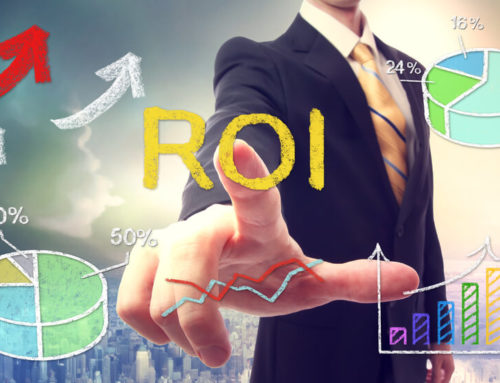Think influencer marketing is only for B2C brands? Contributor Michael Brito explains how the principles of this highly effective technique can be applied to B2B markets.
Total brand spending on influencer marketing was $81 billion in 2016 and is projected to reach $101 billion by 2020, according to a 2017 study from the Association of National Advertisers and PQ Media.
It’s not stated how much of that investment will come from consumer or B2B brands, but it’s clear that influencer marketing has become an integral piece of marketing programs today.
For consumer companies, if you have a product or service with mass consumer appeal, there are thousands of influential consumers (called creators) that you can “hire” and activate through paid campaigns. Companies like OpenInfluence and Clever have access to thousands of influencers as a part of their opt-in influencer network. All you need is an idea or campaign and a sizeable budget. And the great thing is, you can start tracking your program instantly.
How B2B is different
For B2B brands, it’s not that easy. Technology and business influencers can’t take a video of your SaaS (software as a service) platform or snap a photo of your data center and drive sales any time soon. It just doesn’t happen that way. Also, an influencer with a large following on Snapchat or Instagram doesn’t have much credibility with B2B buyers, unless they happen to work in IT themselves — which isn’t a typical scenario.
Also, B2B buyers don’t typically click on a link from an Instagram post, go to a corporate website and purchase software. They usually start the purchase process reading reviews, verifying specs and Googling everything under the sun. This behavior is usually the result of a conversation they had with a peer or co-worker. They spend hours, days and sometimes months researching the technology, asking questions and bouncing ideas off their network.
The minimum average sales cycle for enterprise software is six months. Even though social media has accelerated this cycle, it’s still much longer than the cycle for consumer products. It’s said that B2B buyers get as far as two-thirds through the purchase journey before they contact a vendor, and that’s only if the vendor’s capability meets the basic technical requirements.
How influence works in B2B
Sadly, reaching B2B decision-makers isn’t easy. They are sophisticated, well-educated and skeptical about sales and marketing. That means that — even if it’s more difficult than for consumer brands — the most effective way to overcome this skepticism is by influencing their decisions through trusted third parties — influencers. Consider the following data points:
- Content shared from and created by influencers provided 11x higher ROI than the average display ad after 12 months, according to a case study conducted by Nielsen Catalina Solutions for TapInfluence.
92 percent of marketers that used it in 2017 said that influencer marketing is effective at reaching audiences, a Linqia survey found. - 71 percent of marketers believe that ongoing ambassadorships are the most effective form of influencer marketing, a 2016 Altimeter Research study for TapInfluence discovered.
- So, it’s clear that influencer marketing is reputable, but how is it implemented for B2B brands? It starts with understanding the 1:9:90 model.
The first reference to the 1:9:90 model was in 2006 by The Guardian’s Charles Arthur, who said that “if you get a group of 100 people online, then one will create content, 10 will ‘interact’ with it (commenting or offering improvements) and the other 89 will just view it.”
Since then, the 1:9:90 model has been adapted into various methods to find, segment and activate groups of people online. I have been testing and refining influencer marketing programs for large B2B brands and have altered the definitions:
- The 1% Influencers: These are the opinion leaders and content creators. In the consumer world, they’d be known as ‘trendsetters.” They can reach the majority of their market when they write, Snap, tweet or publish just about anything online. They can create new markets, buzzwords (e.g., “Digital Transformation” or “Enterprise 2.0”) and new product categories. Five years ago, this group consisted only of traditional media and the large analyst firms. Today, influencers can be anyone — media, authors, consultants, second- or third-tier analysts and anyone else with a specific point of view, has some degree of intelligence and has a large audience.
- The 9% Promoters: People in this group are extremely active in social media. They are also very active participants in forums like Reddit. They recommend products and services, coffee shops, consumer products, sneakers — you name it. They have a point of view about everything and will share it freely with just about anyone willing to listen. At times, they will over-share their brand experiences within their communities, whether good or bad. They sign up for newsletters, leave Amazon and Yelp reviews, download content, comment on it and share it — any action that lets their peers know exactly what they think. This 9 percent is the audience that can potentially make or break the conversation.
- The 90% Market: This is everyone else. It’s easy to reach this audience with a $3 million-dollar Super Bowl ad if you have the budget. They are experts at consuming content. They read, learn and absorb everything online. They Google everything — discovering new products, reading reviews and consuming news content. They do not publish anything, nor do they contribute much to the conversation. But don’t neglect them, as their strength lies in numbers. It’s this portion of the 1:9:90 model that decides how compelling the other groups are at telling your brand’s story — and it’s all based on their purchase power and behavior.
The 1:9:90 model of influence can apply to any brand, large or small. The distinction between the groups is important, though. You can’t engage with or communicate with an influencer the same way you would with general consumers. But, whatever the differences between these three audience groups, each one plays a significant role in the content engine. If you can positively engage with an influencer or group of influencers and get them to talk about your company or product, you have the potential to reach the entire market.
Things to look for in an influencer
The process starts with identifying the right influencers. Sadly, many marketers use just one data point to determine which group of influencers to engage with, and it’s usually “reach.” While reach is a good metric, it’s not the only one. Consider the following:
- Reach: How large is their social community across all digital channels — blogs, RSS subscribers, contributed posts, social? Reach is important because you’ll want to know that influencers can actually get content in their followers’ feeds.
- Relevance: How often are they referencing topics and keywords that align with your business or describe your industry? Relevance will confirm that the influencer is “on topic” frequently and didn’t just share an article six months ago and then leave the conversation.
- Resonance: When they create content, how far does it travel on the internet? Are others engaging with it? This metric helps separate real influencers from the ones that have large communities but no engagement. Or, in some cases, the ones that resort to shady tactics that make them appear to be more influential than they actually are.
- Reference: Are they referenced by other influencers? In other words, are the other influencers in your program sharing, commenting on, liking or retweeting content?
One tool I use to help identify influencers is Onalytica. They have a unique platform that allows for both bio and content search. So, if you are looking for an influencer, say an editor, journalist or engineer, who is discussing “artificial intelligence,” you can find them quite easily and preview the content in real time.
Once you understand your specific market and realize what your marketing goals are for influencers, you’ll want to spend a considerable amount of time researching which ones can drive impact for your brand.
In my next article, I will show you how to profile influencers and research their conversational trends and media consumption habits in order to drive actionable intelligence.










